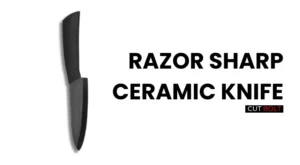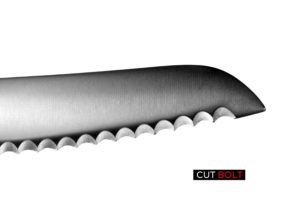Honbazuke Method: It’s time to learn how honbazuke sharpening is done. It originates from traditional Japanese knife production.
In honbazue sharpening method, all blades are hand sharpened and polished in three stages.
It ensures they’re the best they can be.
The best cutting blades are first coarsely ground using a vertically rotating sharpening stone, then honed using a horizontally rotating sharpening stone.
Why honbazuke method is so famous?
For centuries, Japan has been heralded as being the home of master craftsmen, the pinnacle of knife production in the entire world. Their skillful craftsmanship has made them the undisputed experts at sharpening, sharpening, and sharpening knives of the finest quality for any and all purposes. It’s no wonder they have earned the title “masters of the cutting edge” in the world of knives and honing tools.
They are the masters of the art of making the most exquisite and beautiful samurai swords, and they have maintained the tradition of making the best. They are known for making the best quality samurai swords as a status symbol as well as a weapon.
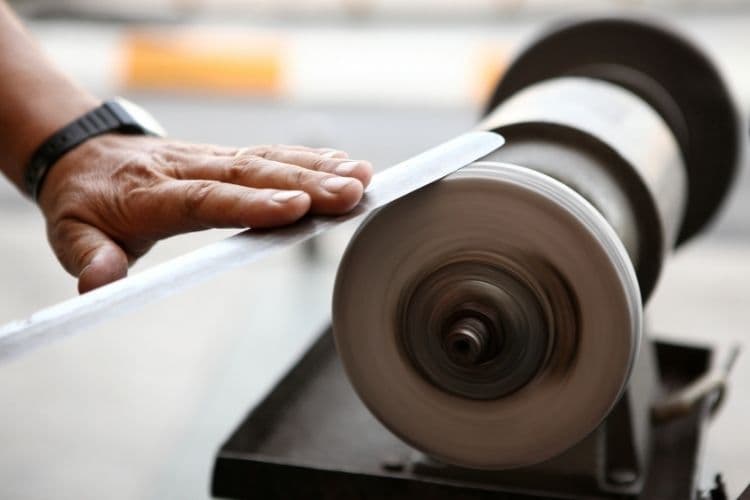
The samurai of yesteryear’s swords became prized possessions and were handed down from father to son. Their glorious blades kept shining like it was newly made swords.
The best knives are forged the same way that these katanas were once forged. They’re formed from fine metal sheets that are beaten and folded into shape a number of times before being tempered and heat-treated to be strong and sharp.
Once this forging process is completed by hammer and anvil, the enduring keen edge has to be sharpened and honed, and this is when the Honbazuke Method is first implemented. This process begins before the knife is used, a craftsman using a whetstone by hand to patiently bring forth the best cutting-edge possible.
After forging is completed the Honbazuke method is applied for the first time. And it is the first step.
Check out Nakiri Vs Gyuto Knife – Differences between Nakiri and Gyuto
What is the Three Step Honbazuke Method?
The method of honing kitchen knives is called Honbazuke. This method was originated in Japan and involves polishing the blade edge in three stages.
When making a Japanese knife, there are actually four stages of the process. The first is the forging and beating of the blade itself into shape. The second is the coarse grinding and sharpening of the blade, which is then followed by the final polishing stage.
The first stage is done by using a vertical rotating sharpening stone to remove excess metal, creating the edge of the knife.
Next comes the second stage, where the blade is honed, which includes honing the edge of the knife, and setting the blade angle for the specific product it is meant to cut or slice.
The final step involves the stropping process which expertly creates the desired high polish of the sheen and razor-sharpness of the blade.
When this method is useful: Honbazuke method is used to make a knife super sharp, durable, and to achieve high performance.
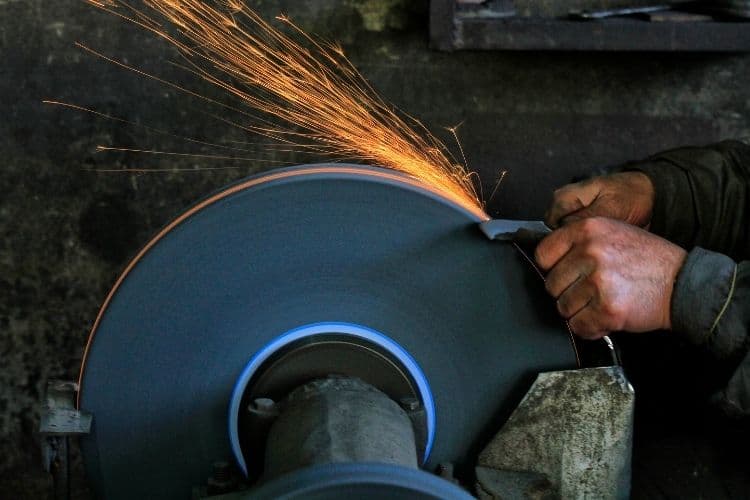
The history of the Honbazuke sharpening method
For centuries, Seki has been one of the focal points of Japanese swords and knives. There were many factors to this, including the availability of quality clay, the abundance of pine coal, and the crystal-clear waters. In simple words, Seki had all the favorable elements to be the kingdom of swords and knives.
Motoshige, a swordsmith observed this uniqueness of Seki and started forging knives in Seki. Soon many more sword smiths followed Motoshige and it became famous for swords. Historians estimated nearly 300 swordsmiths started their workshop at Seki.
Taking forward the ART
Today, Seki remains one of the most famous manufacturers of hand-forged blades for Japanese knives. It’s true, there are fewer knife makers, but that doesn’t mean these artisans aren’t still producing quality, well-made knives.
They follow the same traditions and hone their skills just as diligently as their forefathers did. For knife artisans, Seki is not just a workplace, it is their Pride, their emotion.
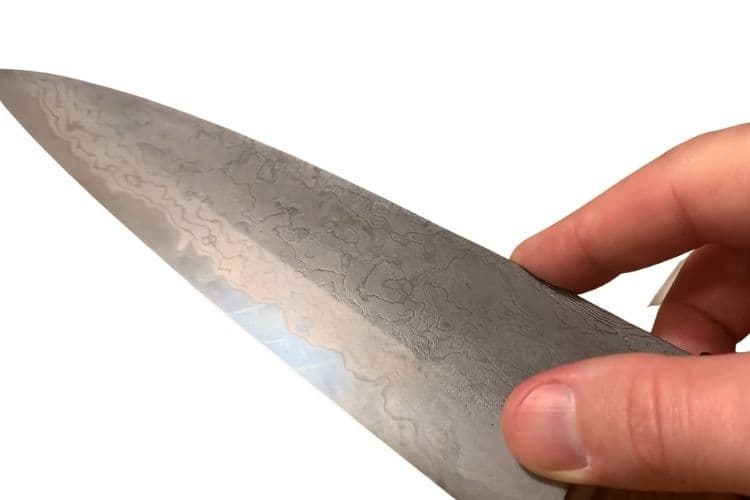
Related post for you 6 Easy Steps to Carbon Steel Knife Care
Honbazuke 3-step method
Honbazuke means – authentic true edge/ potential. It describes blades’ true potential that is not possible through factory sharpening.
That’s why for unparalleled sharp edge, people trust Honbazuke method of sharpening.
Step 1: Honbazuke sharpening – Vertical sharpening of the blade
A whetstone is used to create a finer and more refined edge on a knife. This allows the edge to be honed down to a precise sharpness, which makes it possible to cut through even the most delicate foods with precision and ease.
The process of making a knife blade starts with a coarse grit vertical sharpening stone wheel. The edge is then ground to a uniform and consistent edge at a 15-20 degree angle.
Step 2: Horizontal Sharpening of knife
After that, the edge is sharpened to a razor-sharp point on the whetstone. This is done by positioning the blade edge at an angle of 15-20 degrees, with a consistent firm pressure applied. After a few repetitions, both sides of the blade’s edge are honed to a razor-sharp point.
Step 3: Last step of sharpening knife in Honzabuke method
The final step involves using a leather stropping block to pull the knife back and forth across the leather. This sharpens the knife (like scalpel) and creates an attractive appearance.

Final words about the 3-step Honbazuke method
There are many different techniques for sharpening knives. One is the Honbazuke Sharpening Technique, which is a traditional Japanese art of sharpening knives that dates back to the Edo period. It’s an ancient art passed down through the generations, and the chef can rest assured knowing that the knife will cut with precision.

